Back in 2010, Joel Gascoigne started working on an app for tweeting on Twitter. This was around the time when a free social media scheduler was a rare entity. However, before launching the product for the bigger market, he introduced a landing page instead. After the immense response from the users, he took exactly 7 weeks to bring out the prototype.
Three months later, they had the first 10,000 tweets posted from the platform. The next 10,000 took precisely 2 weeks more. This is how Buffer became the tool that it is right now. This version of Buffer was restricted and only allowed access to a few features.
However, that version of Buffer was far different from the one that we see right now. The UI was different, the tool did not support as many features as it does now, and the pricing plans cost much less.
Even though Buffer is one of the pioneers in the social media management field, many other tools have caught up to speed with the tool. These tools are not only doing better but also providing these services at a super affordable rate.
So, after years of work, there are entirely new Buffer pricing plans, and here is all you need to know about them!
Breaking Down the Buffer Pricing Model
Buffer has four different plans. Starting from a free plan, their biggest plan costs $120. Sounds pretty simple, right? Wrong!
The Old Buffer Pricing Plans vs. The New Ones
The plans look affordable at the first glance, but when you get into the details, that is where the actual devil lies. Buffer has broken down the pricing plans by social profiles.
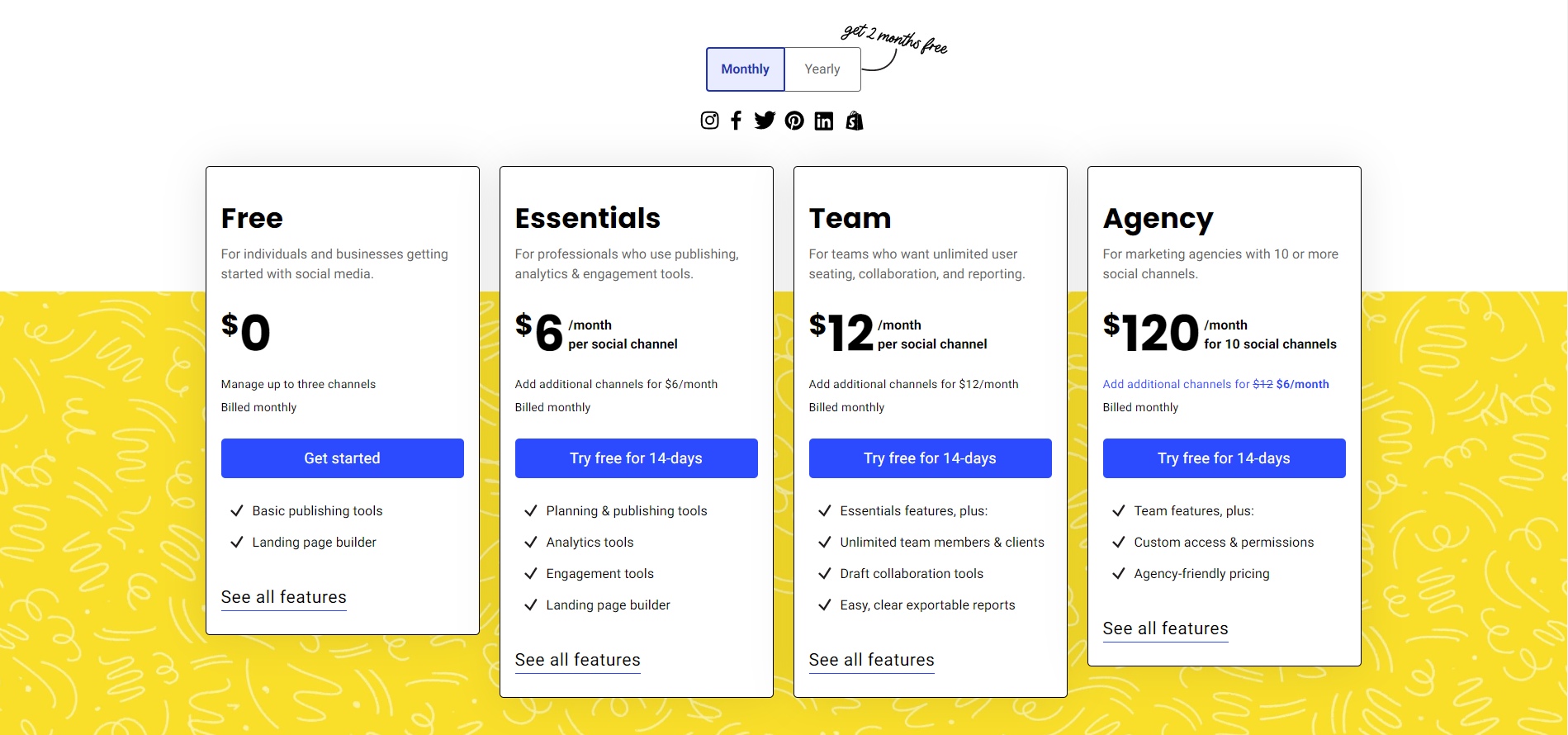
What are social profiles? The social profiles are the social media accounts that are connected to the Buffer plan. They can be Facebook pages or groups, Twitter profiles, etc.
Therefore, the extremely limited free plan only has 3 social profiles and lots of limitations. More on that later.
For now, we shall talk about the three major pricing plans.
The first paid plan is for $6 for ONE profile, which means that for each profile that you add, an additional payment of $6 will be made. So for 6 profiles, the plan will cost roughly $36, and for 8 profiles, it will go to an extremely high price of $48. Not to forget that there is only one team member for the plan, and there is no option to add an extra one.
The plan also has other limitations, such as not exporting reports or using any team management features.
The previous Buffer pricing model had the same Essential plan for $12, which was way lesser than the new one.
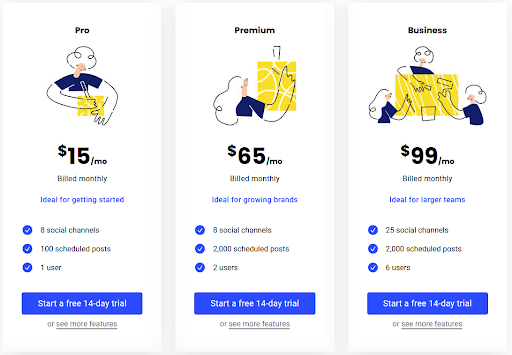
(Source)
Similarly, the Team feature has one social profile for $12, and for each additional one, you pay an extra $12. So for 8 profiles, it will cost $96. However, you can invite as many team members as required.
A similar plan was previously for $65!
The last plan, known as the Agency, now has 10 profiles and unlimited users and costs $120. In the previous Buffer pricing plan, the same one cost around $99 and had a whopping total of 25 social profiles!
The new Buffer model is undoubtedly more expensive than the previous one. Also, it has much fewer social profiles and more limitations.
The second two plans have all features unlocked. However, they are still more on the steep side than competitors available in the market.
The free plan was a new addition to the Buffer pricing model, which we shall discuss next.
Another important thing to notice is that Buffer supports only 10 channels.
The Free Plan at Buffer
The Buffer pricing model hosts a free plan as its first component. The free plan initially had much more to offer than it does now.
However, it then went down to 3 social profiles and more limitations. It is safe to say that people were unhappy with it and took it to Twitter to show their annoyance.
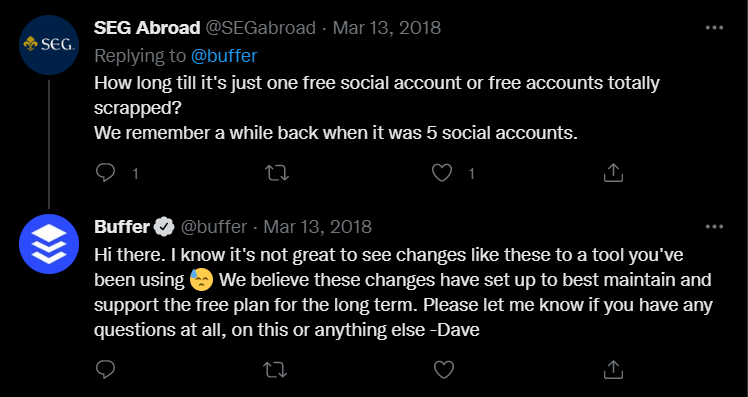
Buffer’s reply to the user’s appropriate query is more than mediocre. It does not handle the issue at hand and is weak. They are continuously justifying their limitations with the sad reason of having to retain their free plan in the long run.
In March 2018, Buffer again decided to make changes to its free plans, this time in terms of features instead of social profiles. Whereas the profiles stayed at 3, the free plan will no longer provide custom link shorteners, and detailed analytics features.

Another user called them out.
So are you wondering why exactly they did that?
Well, according to them, they have triple the number of free plan users compared to the paid ones. Therefore, to retain them, they have to put forward some restrictions. In their words, this would make it easier for them and the users.
This is why the free plan from the Buffer pricing model was revised.
Social Champ Free Plan vs. The Buffer Free Plan
Social Champ has a feature-rich, powerful free plan that can put any other to shame. With no features locked, you can fully automate your social media for as many as 3 social accounts. There is no restriction on post scheduling; therefore, it allows you to post unlimited posts across all three platforms.
Furthermore, Social Champ supports eight major networks, including Facebook, LinkedIn, Pinterest, Instagram, Twitter, Google Business Profile, YouTube, and TikTok.
Here are the two free plan screenshots:
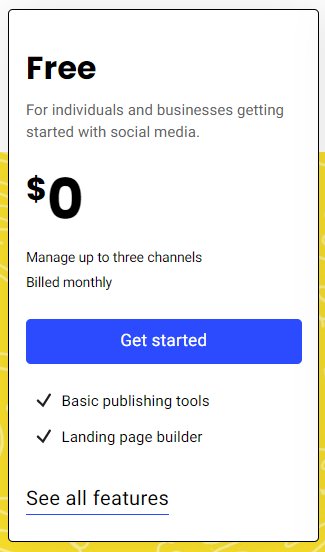
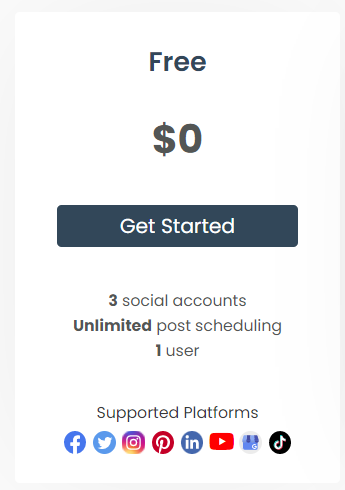
Let’s do a feature breakdown for the two plans:
- Both Social Champ and Buffer have 3 social profiles on the free plan. However, Social Champ supports Facebook, Twitter, Instagram, Pinterest, LinkedIn, YouTube, Google Business Profile, Mastodon, and TikTok. Whereas, Buffer doesn’t support YouTube.
- Buffer has only 10 posts per profile, whereas Social Champ has unlimited posts.
- There is no analytics feature in Buffer’s free plan, and Social Champ has unlocked all analytics features for their plan.
Social Champ’s free plan is like no other in the market since it has next to no limitations and supports almost all features of the paid plans. Therefore, if you have only 3 social profiles, you don’t ever have to pay for a social media management tool.
You can sign up for the free plan on Social Champ and enjoy all the premium perks without entering your credit card details.
How Does Buffer Pricing Compare With Social Champ’s
Both Social Champ and Buffer have a total of four plans in their pricing structure. Three out of four are paid plans, and the last one is a free plan. We have already covered the free plan in the heading above, so let’s get to the paid ones!
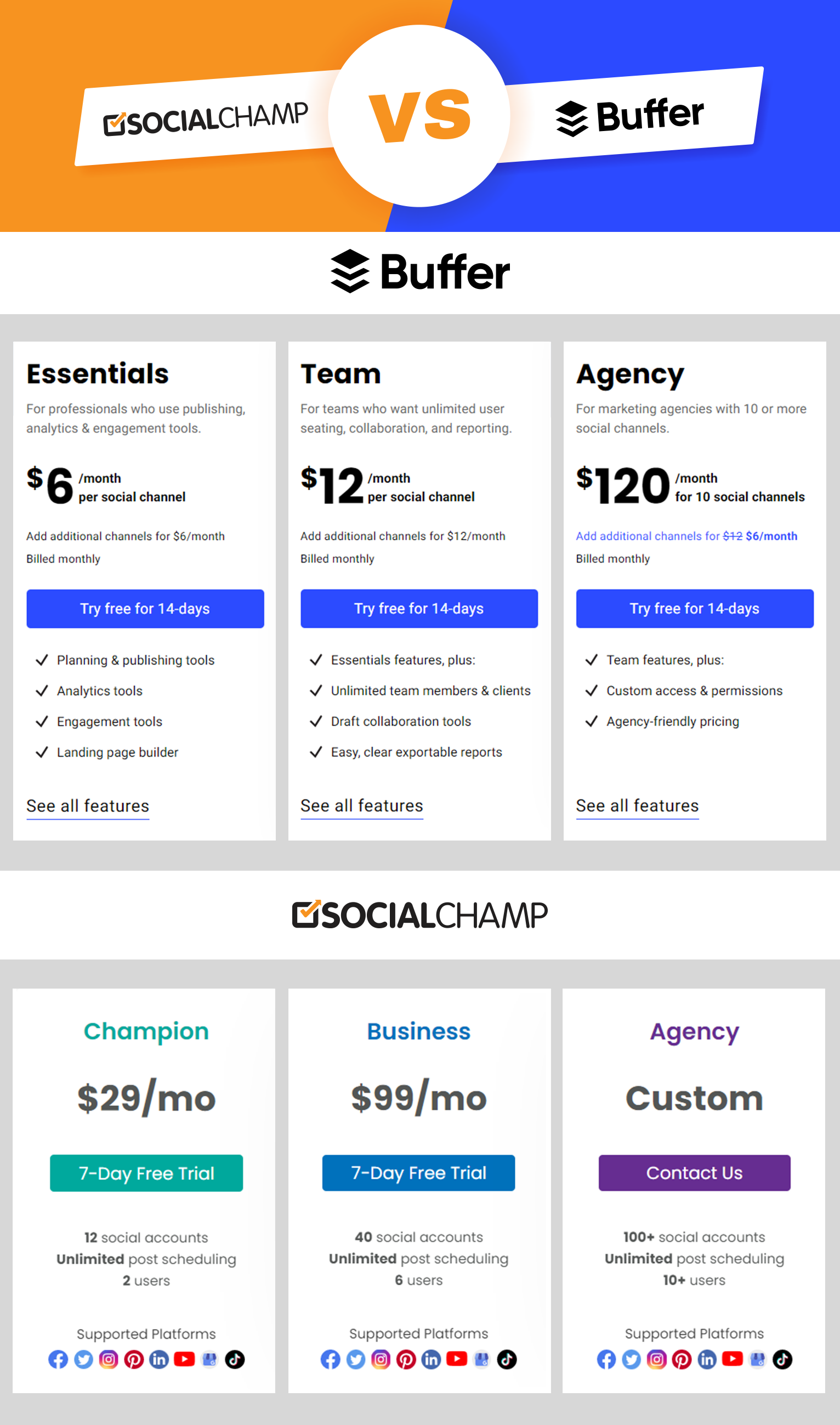
Okay, so the first paid plan is Champion and Essential for Social Champ & Buffer, respectively. The former offers the plan for $29 per month for 12 social profiles, 2 users, and unlimited scheduling. Buffer offers each profile for $6, equating to $72 for 12 profiles. The Essential plan has only 1 user, and there is absolutely no option to add an additional team member. However, you can add an extra team member for $6 in the Champion plan.
Buffer’s plan is almost 40% more expensive than Social Champ’s!
Moving on to the next plan, which is meant for bigger teams and small/medium-sized businesses. The plans are called Business and Team. Social Champ offers 40 social profiles, 6 users, and unlimited posting in this plan for $99. The Team plan has ONE profile for $12 per month, equating to $480.
This Buffer plan is almost 20% more expensive than Social Champ’s Business plan!
The third plan from the Buffer pricing model and Social Champ’s is called Agency for both!
Social Champ has kept this plan for only those who handle big teams; therefore, the pricing is custom!
Book a demo with our customer representative or community team for a custom Agency solution for your business today!
Feature Comparison Between Buffer and Social Champ
All digital marketing tools are meant to simplify your life and provide automation features that save time. So a feature comparison between the two tools is super important here. Here are the top FOUR features that we will base our comparison on.
Supported Social Media Networks & Integrations
Buffer supports only five networks, including Instagram, Facebook, Twitter, Pinterest, LinkedIn, and Shopify. In comparison, Social Champ supports 9 networks, including Facebook, LinkedIn, Pinterest, Instagram, Mastodon, Google Business Profile, TikTok, YouTube, and Twitter. Social Champ is also coming up with WhatsApp integration pretty soon!
Other than that, both tools have multiple integrations.
Publish & Schedule
Both Social Champ and Buffer have a publishing dashboard. However, Social Champ offers unlimited scheduling across all plans, and Buffer only allows 2000 posts per profile, even in their most expensive plan. So you get a whole lot more posts in up to a 20% lesser amount.
Coming to Social Champ’s dashboard, the UI is super clean, and the user flow is also straightforward. You can create posts, design visuals, publish, and add content to Queue from it. You can also keep your social profiles active by connecting them to your favorite websites or blogs using Auto RSS.
You can upload content in bulk and create Workspaces to declutter your calendar. There is so much included in the Social Champ’s publish feature that it is the best you could get for this price.
Engage & Social Inbox
Social Champ and Buffer have a similar Engage feature. You can use this dashboard to reply to comments, DM/PM, reviews, and mentions within the Social Inbox. With Buffer, you get a grid view of all unanswered conversations, whereas with Social Champ, you get a list view.
With Social Champ, you can also add labels and filters within conversations to tell them apart. Apart from this, you can also save replies and set automation rules.
Customer Support & Community
If a company’s customer service is next-level amazing, 78% of the customers will do business with them even after an issue.
This is why tools must focus on building a community and providing excellent customer support.
Buffer has a helpdesk guide, email support, and social media support available for any customer queries. Social Champ has email support, a helpdesk guide, social media support, Facebook groups, demo calls, and a live chat system!
The demo calls are an excellent way to get familiar with the platform or solve your queries on the spot with our team. The live chat has also proven itself to be a huge help for customers!
Don’t believe us? You can check out the reviews.

3 Other Buffer-Like Tools to Check Out in 2022
There are multiple other Buffer alternatives in the market that you should check out in 2022. All these tools provide much better value for money and have a more extensive feature pool than Buffer. Other than these two reasons, the following tools will also be easier on the pocket; well, at least some of them will be.
But, one thing is for sure these tools all have plans similar to the Buffer pricing model.
Even though there are many social media tools you can check out, here are our top 3 picks.
Social Champ
Well, it should come as no surprise that Social Champ tops our list. We might be a little biased, but these screenshots and customer reviews speak for themselves.


So, Social Champ is a social media management tool that supports the 8 major platforms, including Facebook, Instagram, Pinterest, Twitter, YouTube, TikTok, Google Business Profiles, and LinkedIn. The tool also supports multiple other integrations, including bit.ly, Wave.video, Vista Create, WordPress, Canva, GIPHY, Google DropBox, and more.

Social Champ has 4 major parts: Publish, Engage, Calendar, and Analyze. These 4 major features encompass all the sub-features, including Auto RSS, Recycle, Repeat, Hashtag Manager, White labeling, Reporting, First Comment, Location Tagging, Link Shortening, Bulk Upload, Team Collaboration, and more.
The Publish dashboard allows you to create, edit, schedule, and design posts from scratch. The Engage feature brings all conversations, DM/PM, comments, reviews, and mentions under ONE roof with labeling & filtering options. The Social Media Calendar presents a grid view of all published and scheduled posts to edit or reschedule using drag/ drop. Lastly, the Analyze feature creates presentation-ready reports with graphs and charts with platform-specific metrics.
Social Champ has one free, and three paid pricing plans starting from $29 a month. The paid plan is super powerful, with ALL features unlocked.
You can hop on a demo call today to check it out. Or you can check out our fully decked helpdesk guide or YouTube channel.
SocialOomph
SocialOomph started out as a Twitter automation platform with limited functionalities. However, after a few years, they realized that they had the potential to do so much more than just scheduling tweets. This was when they integrated more platforms into their tool.

One of the best parts about SocialOomph is that it supports Discord. The pricing plans start from as low as $15/month with support for one social profile!
MeetEdgar
Meet Edgar has plans similar to Buffer pricing plans and supports almost the same features as well. With support from Facebook, LinkedIn, Instagram, Pinterest, and Twitter, the tool provides solutions for small businesses and entrepreneurs. With Meet Edgar, you can schedule posts, organize content, and recycle old media as well.

Meet Edgar has pricing plans starting from $29.99 per month for 5 social profiles. The only other plan is $49.99 per month for 25 social accounts!
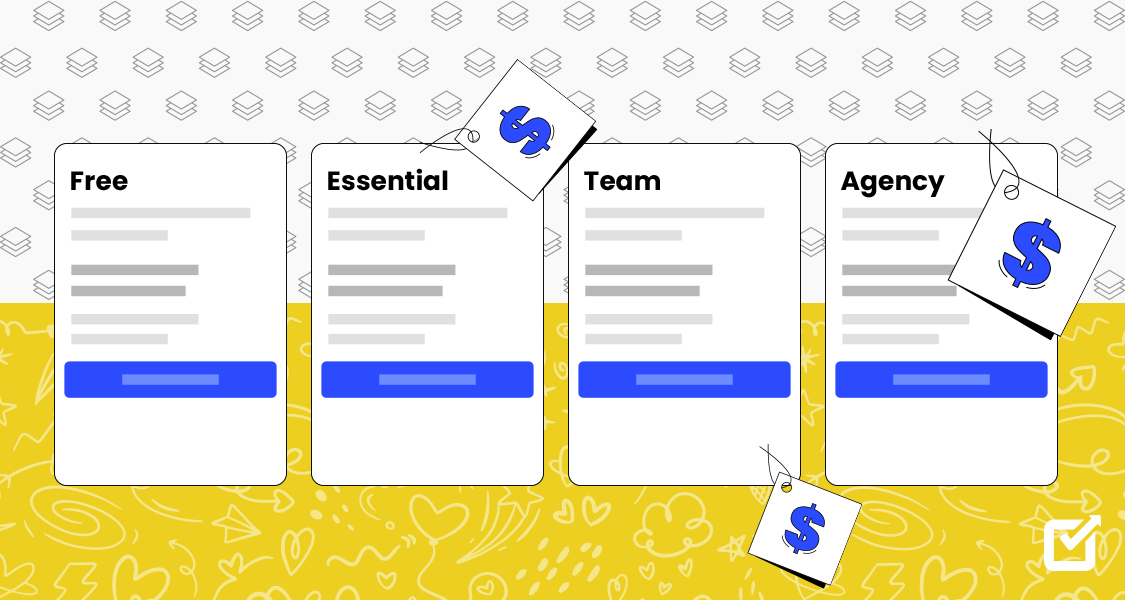
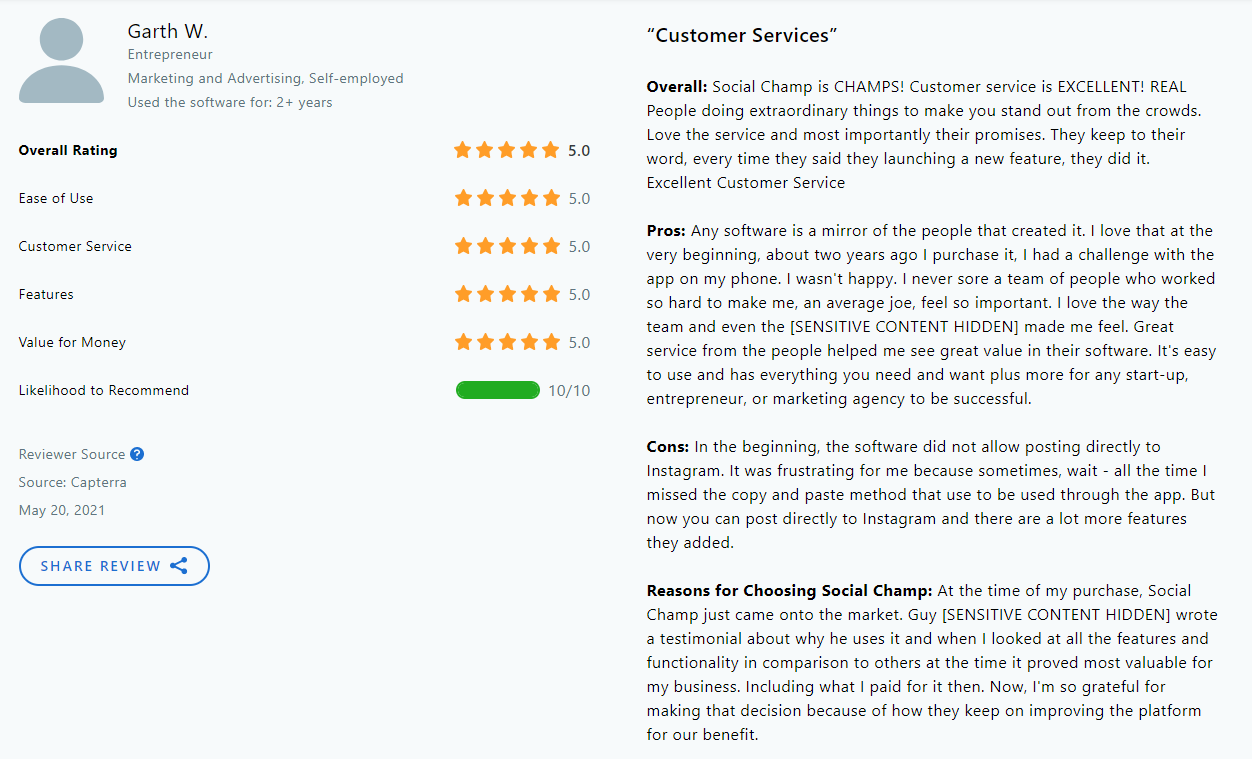
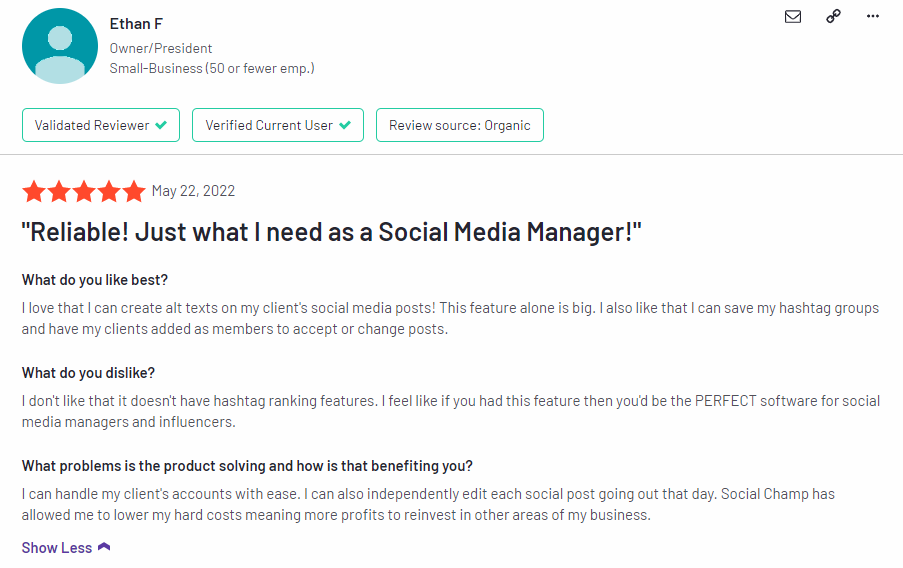
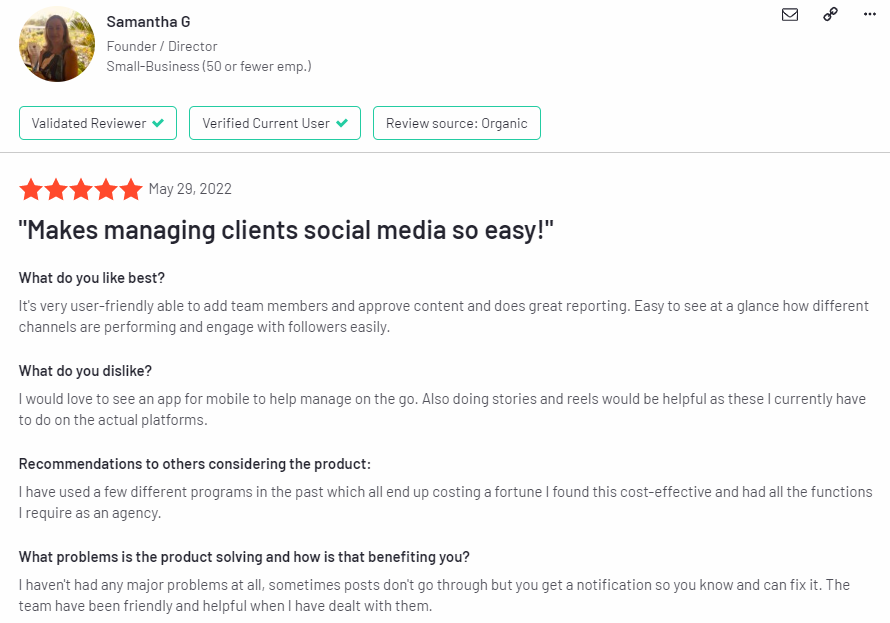
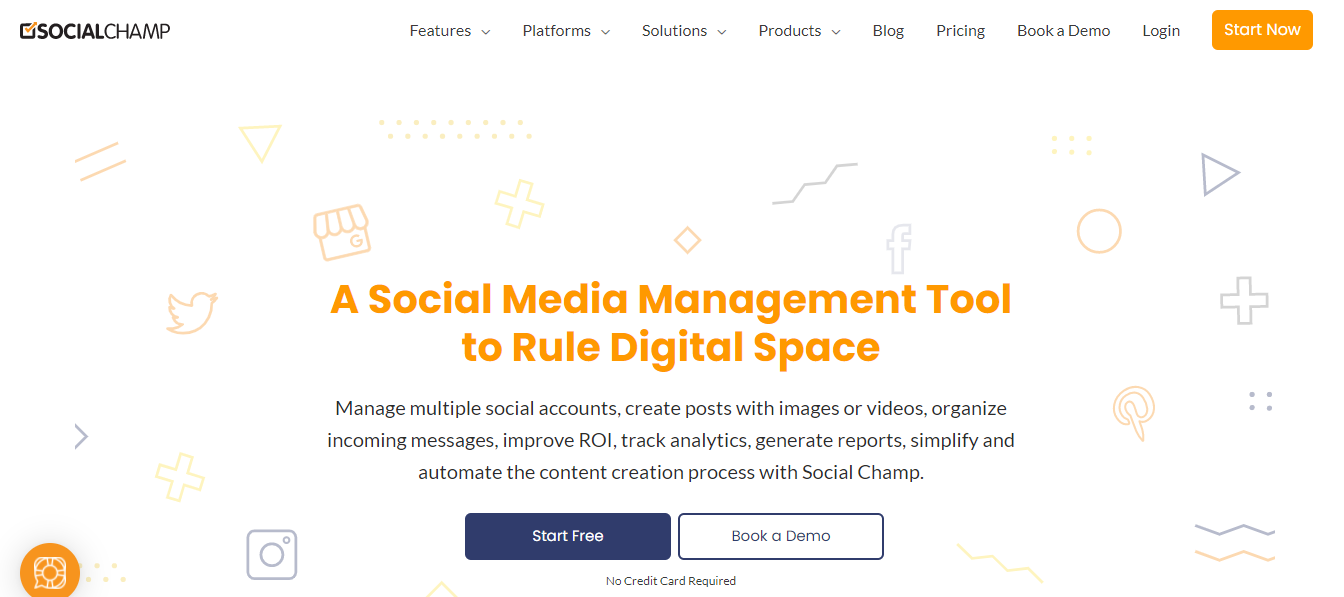

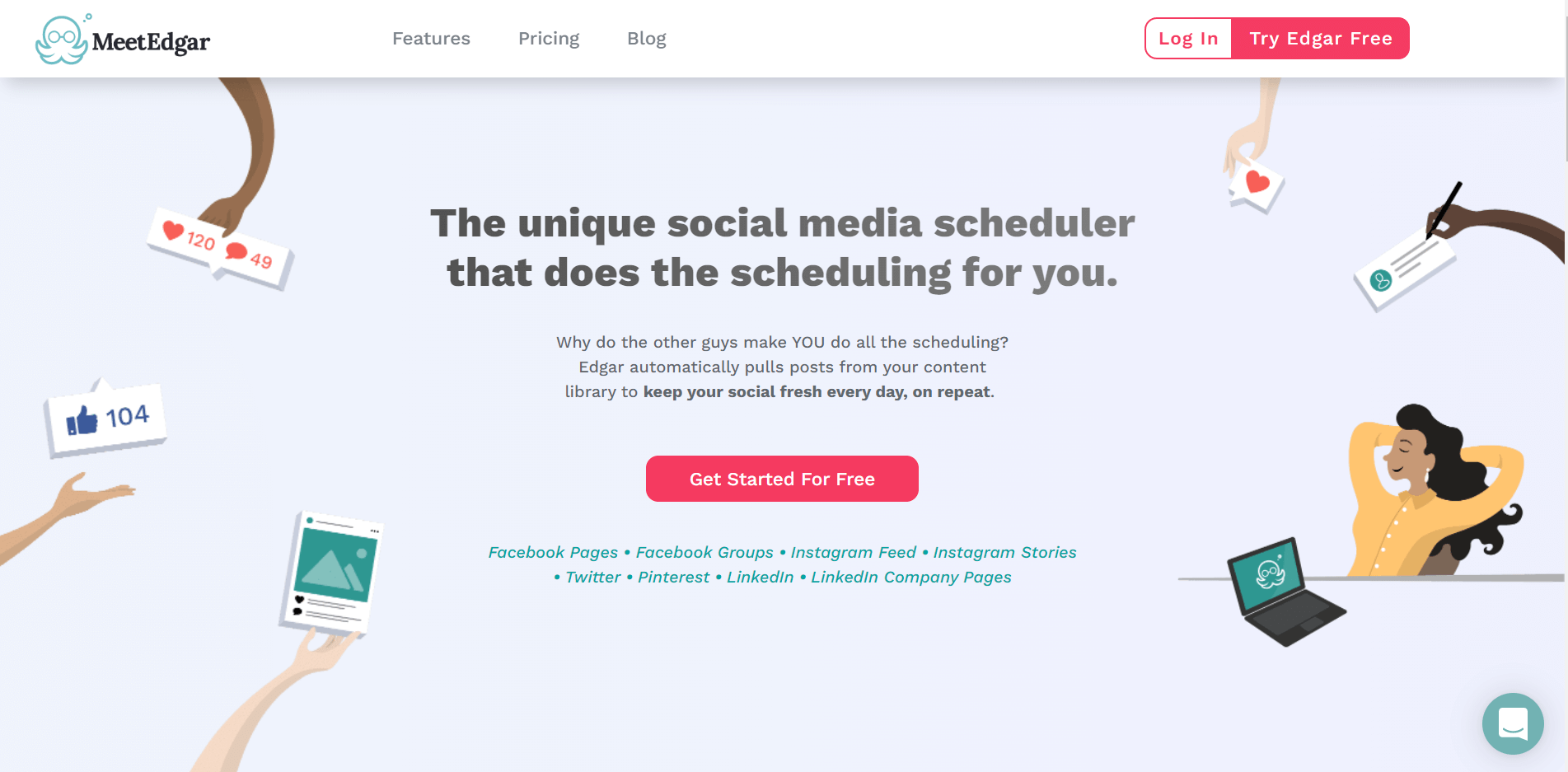













1 thought on “All You Need to Know About the Buffer Pricing Model in 2023”
Buffer is overrated, i mean it! Also, buffer pricing for now is too much. I am on trial for Social Champ and would surely be coming here!